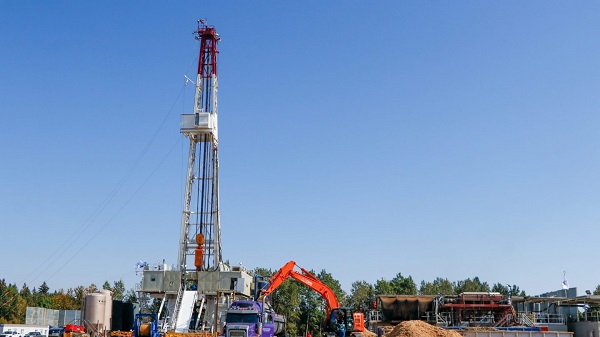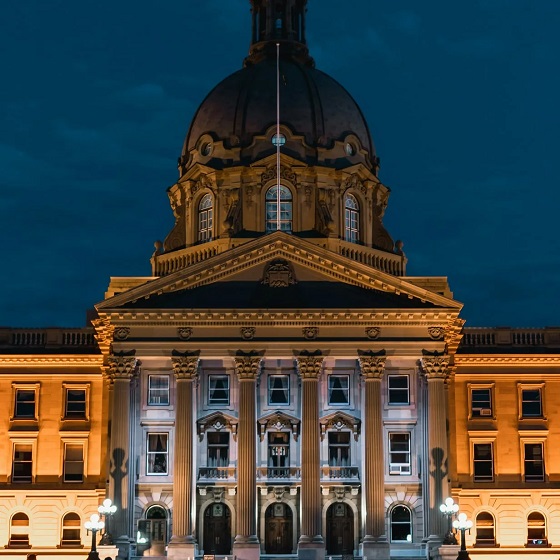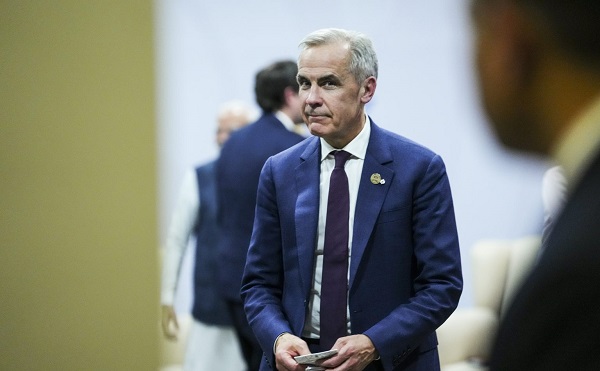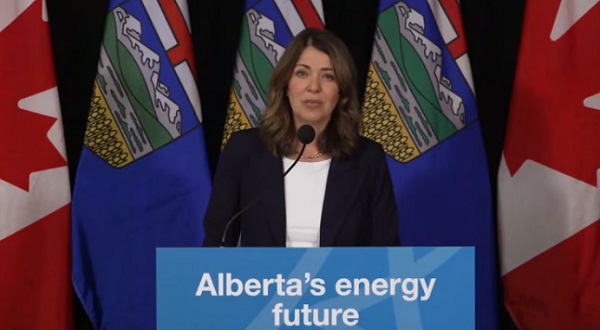Alberta
Never again! Preston Manning review recommends Emergency Management Agency co-ordinate response to future province-wide public emergencies.

Emergency Review Panel Releases Final COVID-19 Report and Recommendations for the Alberta Government
The Public Health Emergencies Governance Review Panel, led by Preston Manning, delivered its final report to the Government of Alberta, which includes over 90 recommendations for consideration.
The Panel was tasked by Premier Danielle Smith with undertaking a detailed review of the legislation and governance employed during the COVID-19 crisis, and to recommend changes and additional legislation to better prepare the province to meet future public emergencies. The mandate of the Panel was not to conduct an overall inquiry into the government’s response to COVID-19, but strictly to review the statutes that provided the legal basis for the government’s response to COVID-19.
Drawing upon the expertise and research of advisors and contractors commissioned for the study, the Panel arrived at a series of conclusions and recommendations for the Alberta Government to consider.
The recommendations of the Panel fall into three main categories, and included:
- Improving the focus and performance of the administrative and regulatory framework used to respond to provincewide public emergencies, including:
- Strengthen the Alberta Emergency Management Agency (AEMA) through legislative amendments and budgetary provisions to make it the lead government agency responding to and coordinating the response of the Alberta government to future provincewide public emergencies, including health emergencies.
- Develop and maintain a broadly-based Inventory of Scientific Advice and Scientific Advisors that can be drawn upon in the event of a public emergency.
- Mandate by legislation that preliminary, interim and post-emergency impact assessments be conducted in response to any future provincewide public emergencies.
- Reject provincewide school closures as a policy option in responding to a provincewide public emergency, except in the most exceptional of circumstances, and then only for the shortest possible period of time.
- Balancing the protection of Albertans from the harms caused by public emergencies with the protection of their basic rights and freedoms during an emergency period, including:
- Amend the Alberta Bill of Rights and Alberta’s Employment Standards Code and Health Professions Act to protect the rights and freedoms of all Albertans, including workers and healthcare professionals, and the freedom of expression during public emergencies.
- Increasing the overall capacity of Alberta’s healthcare system to respond to surges in demand caused by a public health emergency. Here, the Panel recognized that the government has already taken numerous incremental steps to increase the overall capacity of the healthcare system. The Panel commends those initiatives and recommends additional incremental steps, all compatible with the principles of universality and the Canada Health Act, including:
- Expanding the use of nurse practitioners and licensed practical nurses.
- Reducing or eliminating barriers to labour mobility for healthcare workers.
- Exploring options for attracting more healthcare providers into medical training
- Incentivizing medical graduates to serve in the most needed areas.
- Utilizing pharmacists to their full scope of practice.
- Expanding and improving the organization of home care services.
- Expanding the capacity of the Alberta healthcare system to deal with mental health.
- Expanding and supporting the use of virtual medicine and telemedicine.
- Streamlining system administration.
The panelists include Michel Kelly-Gagnon (President Emeritus of the Montréal Economic Institute), The Honourable John C. (Jack) Major CC KC (Former Supreme Court of Canada Justice), Preston Manning, PC CC AOE (former MP for Calgary Southwest and Leader of the Opposition in the House of Commons), Dr. Jack Mintz (president’s fellow of the School of Public Policy at the University of Calgary and a distinguished senior fellow of the MacDonald-Laurier Institute), Dr. Martha Fulford (Infectious Disease Specialist and Retired Chief of Medicine, McMaster University), and Dr. Robert Tanguay, Psychiatrist and Clinical Assistant Professor of Psychiatry and Surgery at the Cumming School of Medicine).
Quotes
“The COVID-19 pandemic and resulting global turmoil was unprecedented. Alberta, like the rest of the world, had to make decisions quickly and with limited, changing and even conflicting information. It is my hope that by adopting these recommendations, the Government will be better equipped to cope with future emergencies, and that the impacts on Albertans – their personal livelihoods, civil liberties, and mental health can be mitigated to the greatest extent possible.” – Preston Manning, Chair
“For the credibility of the study and our final recommendations, I felt it was important to select panelists and advisors with varied areas of expertise and perspectives on the key issues. For that reason, while there were certainly differences of opinion, I am thrilled that we were ultimately able to arrive at a consensus on the recommendations put forward.” – Preston Manning, Chair
Read the full report here.
Most Important Conclusions/Recommendation Per Chapter
- Strengthen, through legislative amendments and budgetary provisions, the Alberta Emergency Management Agency (AEMA) – whose members are specifically trained in emergency management – to make it the lead government agency for co-ordinating the response of the Alberta government to any and all future provincewide public emergencies. (Chapter 2)
- Appoint a Senior Science Officer, with multidisciplinary training and experience, to the AEMA, responsible for developing and maintaining a broadly based Inventory of Scientific Advice and Scientific Advisors that can be drawn upon in the event of public emergencies. (Chapter 3)
- Increase the effectiveness and accountability of the Alberta regulatory framework by increasing its evidence- based decision-making capacity, transparency, consistency, fairness, and self-correctability via feedback. (Chapter 4)
- Reject provincewide school closures as a policy option in responding to a provincewide public emergency, except in the most exceptional of circumstances and only then for the shortest possible period of time. (Chapter 5)
- Mandate by legislation the conduct of impact assessments prior to, during and after promulgation of orders and regulations for adoption in response to a declared provincewide public emergency. (Chapter 6)
- Recognize that public emergencies generate additional and exceptional pressures on governments to limit the exercise of rights and freedoms, and thus amend theAlberta Bill of Rights to specifically strengthen the protection of rights and freedoms under such circumstances. (Chapter 7)
- Increase the protection of the rights and freedoms of workers and healthcare professionals, during public emergencies, in particular their freedom of expression, through amendments to Alberta’s Employment Standards Code and Health Professions Act. (Chapter 8)
- Increase the overall capacity of the Alberta healthcare system, thereby increasing its capacity to meet surges in demand caused by public health emergencies, through the incremental measures proposed, while respecting the principle of universality and the provisions of the Canada Health Act. (Chapter 9)
- On the belief that Alberta can always learn from others, invite representatives from countries having healthcare systems that outperform Canada/Alberta to a Colloquium on 21st Century Healthcare Best Practices to identify the policies, legislation and features of their systems responsible for superior performance. (Chapter 9)
- The recommendations of this report are based on the general consensus of Panel members as to how best to prepare Alberta to cope with future public emergencies. But “preparing for future public emergencies” is an evolving process, subject to unforeseen factors and considerations. Therefore, alternative perspectives and narratives on how to best cope with future emergencies should also be welcomed, appreciated and examined.
Alberta
Alberta will defend law-abiding gun owners who defend themselves

Alberta’s government will introduce a motion under the Alberta Sovereignty within a United Canada Act to defend law-abiding firearms owners.
A new motion under the Alberta Sovereignty within a United Canada Act will, if passed by the legislature, instruct all provincial entities, including law-enforcement agencies such as municipal police services and the RCMP, to decline to enforce or implement the federal gun seizure program. The motion also makes clear that Albertans have the right to use reasonable force to defend themselves, their families and their homes from intruders.
This builds on the steps Alberta has already taken to reduce crime, strengthen public safety and assert provincial jurisdiction over firearms. This includes passing the Alberta Firearms Act to establish the Alberta Chief Firearms Office, along with the Alberta Firearms Regulation and the Seizure Agent and Provider Licensing Regulation.
“It’s time for Ottawa to stop targeting the wrong people. Albertans have the right to protect their homes and their families. No one should hesitate to defend themselves when faced with a threat at their own doorway. Law-abiding citizens, hunters, farmers and sport shooters are not the source of violent crime, yet the federal government wants to confiscate their property while illegal guns pour across our borders. Alberta will not stand by while responsible gun owners are treated like criminals. This motion is about using every legal tool we have to protect their rights, uphold public safety and push back on federal overreach into provincial jurisdiction.”
“When someone breaks into your home, the law recognizes that you have enhanced rights to protect yourself and your family. Alberta is making that principle unmistakably clear: lawful, reasonable self-defence will be respected, not criminalized.”
“As an experienced former law enforcement officer, law-abiding gun owners have never been an issue, in my own personal experience, nor has there been any data to support that law-abiding gun owners are the ones that are committing violent gun crimes. The illegal guns that you see being used by criminals are typically being smuggled in from the United States. The federal government should help us strengthen the border, helping us to stop illegal guns from coming into Canada. This would further enhance safety and security for the people of Alberta and Canada as opposed to going after lawful gun owners.”
Under the Alberta Firearms Regulation, municipalities, law enforcement and police commissions must obtain approval from Alberta’s Minister of Justice before accepting funding to participate in the Assault-Style Firearms Compensation Program.
“Misguided federal initiatives such as the handgun transfer ban and the Order in Council firearms prohibitions of 2020, 2024 and 2025 have had a devastating impact on the safe, legitimate activities of the firearms community and the businesses that support it, while having no discernible effect on criminal activity. I am proud to see that the Alberta government is pushing back and supporting lawful firearms owners through these measures.”
“Licensed gun owners and all Albertans can rest assured that their government, under the leadership of the UCP, is laser focused on protecting law abiding citizens while prioritizing real public safety.”
“The Alberta Hunter Education Instructors Association will continue to support our government and the Alberta chief firearms officer in our joint quest to use safety training and education as the key tools to ensure we have safer streets and communities. Safe and responsible use of firearms in Alberta is a key part of our heritage, culture, and our rich and precious heritage.”
Key facts:
- Pursuant to the Attorney General’s recent guidance protocols, Alberta’s prosecutors will decline to prosecute offences under the federal gun seizure program when it is not in the public interest.
- The Attorney General’s recent guidance protocol directs prosecutors to not prosecute home defence offences when it is not in the public interest.
- Total spending on the federal Assault-Style Firearms Compensation Program is expected to exceed $750 million.
- The firearms motion considers the Alberta Bill of Rights, the Constitution Act, 1867 and the Criminal Code.
- Currently 10 per cent of adult Albertans are licenced to use and own firearms. There are 381,900 firearms licences in Alberta.
- Alberta has 638 licensed firearms businesses, 138 shooting ranges and 91 shooting clubs.
Alberta
Emissions Reduction Alberta offering financial boost for the next transformative drilling idea

From the Canadian Energy Centre
$35-million Alberta challenge targets next-gen drilling opportunities
‘All transformative ideas are really eligible’
Forget the old image of a straight vertical oil and gas well.
In Western Canada, engineers now steer wells for kilometres underground with remarkable precision, tapping vast energy resources from a single spot on the surface.
The sector is continually evolving as operators pursue next-generation drilling technologies that lower costs while opening new opportunities and reducing environmental impacts.
But many promising innovations never reach the market because of high development costs and limited opportunities for real-world testing, according to Emissions Reduction Alberta (ERA).
That’s why ERA is launching the Drilling Technology Challenge, which will invest up to $35 million to advance new drilling and subsurface technologies.
“The focus isn’t just on drilling, it’s about building our future economy, helping reduce emissions, creating new industries and making sure we remain a responsible leader in energy development for decades to come,” said ERA CEO Justin Riemer.
And it’s not just about oil and gas. ERA says emerging technologies can unlock new resource opportunities such as geothermal energy, deep geological CO₂ storage and critical minerals extraction.
“Alberta’s wealth comes from our natural resources, most of which are extracted through drilling and other subsurface technologies,” said Gurpreet Lail, CEO of Enserva, which represents energy service companies.
ERA funding for the challenge will range from $250,000 to $8 million per project.
Eligible technologies include advanced drilling systems, downhole tools and sensors; AI-enabled automation and optimization; low-impact rigs and fluids; geothermal and critical mineral drilling applications; and supporting infrastructure like mobile labs and simulation platforms.
“All transformative ideas are really eligible for this call,” Riemer said, noting that AI-based technologies are likely to play a growing role.
“I think what we’re seeing is that the wells of the future are going to be guided by smart sensors and real-time data. You’re going to have a lot of AI-driven controls that help operators make instant decisions and avoid problems.”
Applications for the Drilling Technology Challenge close January 29, 2026.
-

 Business12 hours ago
Business12 hours agoRecent price declines don’t solve Toronto’s housing affordability crisis
-

 Artificial Intelligence2 days ago
Artificial Intelligence2 days ago‘Trouble in Toyland’ report sounds alarm on AI toys
-

 National1 day ago
National1 day agoMedia bound to pay the price for selling their freedom to (selectively) offend
-

 Bruce Dowbiggin1 day ago
Bruce Dowbiggin1 day agoSometimes An Ingrate Nation Pt. 2: The Great One Makes His Choice
-

 Daily Caller11 hours ago
Daily Caller11 hours agoTech Mogul Gives $6 Billion To 25 Million Kids To Boost Trump Investment Accounts
-

 Business1 day ago
Business1 day agoWhy Isn’t There a Cure for Alzheimer’s Disease?
-

 Alberta1 day ago
Alberta1 day agoNew era of police accountability
-

 Business11 hours ago
Business11 hours agoCanada’s future prosperity runs through the northwest coast









